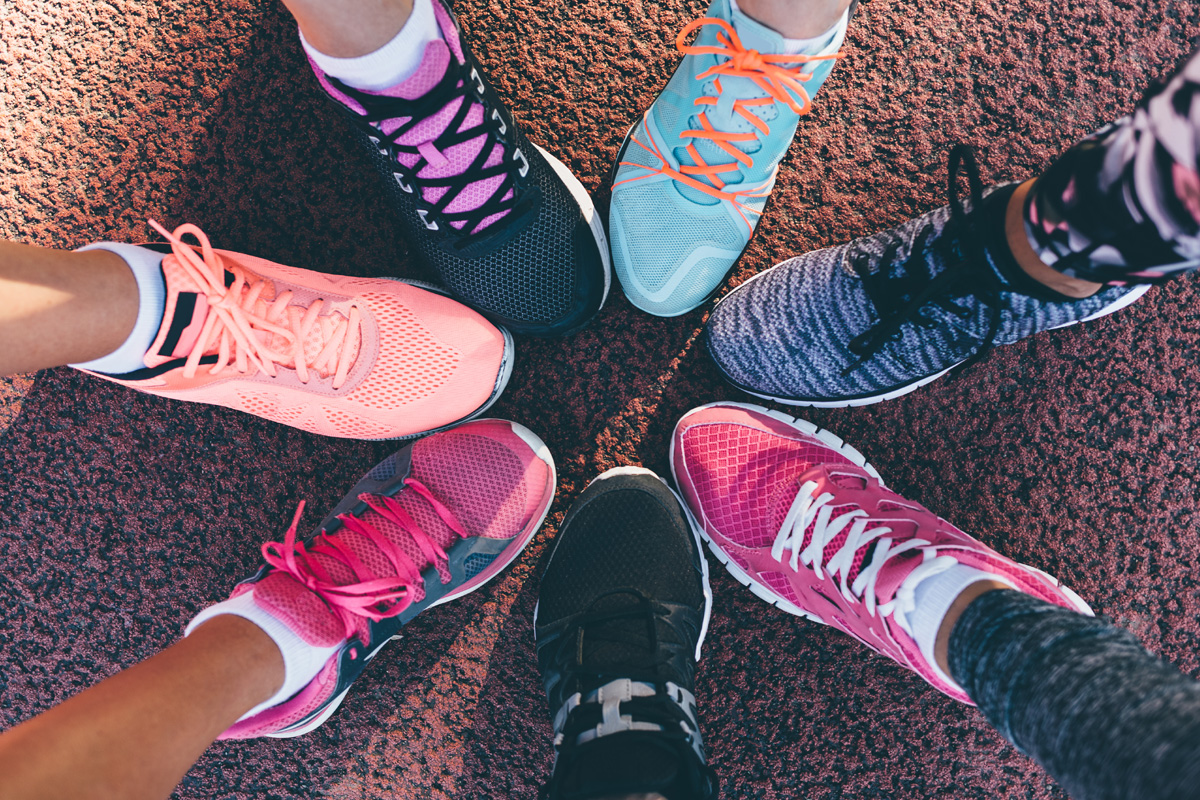Written by Heather Davies-Strickleton, Senior Analytical Scientist
Running into trouble: Athlete’s foot is a common problem
Athlete’s foot needs no introduction. A whopping 1 in 6 of us are estimated to have this fungal infection of the foot (also known as tinea pedis).1,2 It usually starts with an irritating itchy rash between the toes, but can progress to painful cracking and blistering of the skin on the toes and soles of the feet.3 Tinea pedis was first reported in Europe in 1908, before which it was considered a rare phenomenon.4 Since then numbers have sprinted forward, likely as a result of occluded (closed) footwear, greater movement of people from place to place and more communal sports and health clubs.4
Athlete’s foot occurs because a type of fungus called dermatophytes love to grow in damp, moist places like the areas between our toes.1 They thrive there in the upper layers of the skin, feeding off the skin protein keratin, resulting in a weakened skin barrier and leading to the subsequent symptoms of Athlete’s foot.1 When it affects between our toes its known as ‘interdigital’, whilst ‘plantar’ refers to infection found on the sole of the foot. It’s not usually serious but can also spread to other parts of the body, such as the nail (onychomycosis) and groin (tinea cruris)5, which can make treatment more difficult.
The disease gets its name from the higher prevalence among athletes.1 Sporting activities like running and swimming can lead to sweaty or wet feet, creating a prime environment for dermatophytes.1 Walking barefoot in shared sporting environments (swimming pools, changing rooms etc) can also cause a higher risk of encountering the fungus or fungal spores (particles that enable fungi to reproduce), which can survive there for months or even years.6,7 But it’s not just athletes who are affected; anyone can contract it, and there is more chance of getting it as we age.8 Other risk factors include being immunocompromised or having a health condition such as peripheral vascular disease or diabetes.8,9
Toe be or not toe be: Taking steps towards prevention
Good foot hygiene is a good first step to avoid developing Athlete’s foot. Keeping feet clean and dry, particularly after exercise can reduce their dampness so fungi can’t thrive.6 Using clean socks and footwear, rather than those old dirty trainers, let’s feet breathe, reducing infection.1
Athlete’s foot is also highly contagious, so if you do have the infection you should take measures to prevent it spreading, including: avoiding direct skin contact with other individuals; not sharing towels, shoes and socks; and wearing flip-flops when using swimming pools and changing rooms.1,6
Finding a sole mate: Antifungals stamp out infection
Athlete’s foot doesn’t normally go away on its own1, but can be successfully treated with antifungals (which had a global market worth of ~$700M in 2017).8 Most treatments are applied directly to the foot in the form of creams and sprays. These are often available over-the-counter from pharmacists and contain antifungal drugs, such as, terbinafine, ciclopirox, clotrimazole, econazole, ketoconazole, miconazole and sulconazole.10 Sometimes, for severe infections, oral antifungals, such as terbinafine, fluconazole, itraconazole and griseofulvin may be prescribed to adults, although these treatments can produce serious side-effects in some cases.10 Steroid creams may also offer symptom relief alongside antifungal creams.6
In developing countries, there is little awareness about fungal infections despite a large number of undiagnosed patients.8 The burden of tinea pedis in these countries could be improved by greater prevention and awareness, better quality and affordable treatments and greater access to healthcare.
Keeping healthy from head to toe
In this series of blogs, we’ve considered the major fungal “tinea” infections from head to toe: tinea capitis (scalp), tinea corporis (body), tinea cruris (groin) and now tinea pedis (feet). These infections can span from annoying irritations to very painful blisters and scarring, and can wreak havoc with our body image. Good hygiene is a great way to prevent fungi from taking hold, but when infection strikes antifungal treatments can provide the medical means to defeat it!
References
- InformedHealth [Internet] Athlete’s foot: Overview. Available from: https://www.ncbi.nlm.nih.gov/books/NBK279549/ [Accessed on 22/11/2019]
- The Guardian [Internet] Dr LuisaDillner’s guide to… Athlete’s foot. Available from: https://www.theguardian.com/theguardian/2010/mar/16/dr-luisa-dillner-athletes-foot [Accessed on 22/11/2019]
- Everyday Health [Internet] What is Athlete’s Foot? Available from:https://www.everydayhealth.com/athletes-foot/guide/ [Accessed on 22/11/2019]
- Ghannoum MA and Perfect JR.2009 p 258. Antifungal Therapy. New York. Informa Healthcare USA
- Kids Health [Internet] Athlete’s Foot. Available from:https://kidshealth.org/en/kids/athletes-foot.html [Accessed on 22/11/2019]
- NHS [Internet] Athlete’s foot. Available from:https://www.nhs.uk/conditions/athletes-foot/ [Accessed on 22/11/2019]
- bpac[Internet] Tinea pedia: not just the curse of the athlete. Available from: https://bpac.org.nz/BPJ/2014/December/tinea-pedis.aspx [Accessed on 25/11/19]
- Future market insights 2017: Tinea Pedis Treatment Market: Global Industry Analysis 2012 – 2016 andOpportunity Assessment, 2017 – 2027
- Londondoctors clinic [Internet] How to handle athlete’s foot. Available from: https://www.londondoctorsclinic.co.uk/blog/how-to-handle-athletes-foot/ [Accessed on 22/11/2019]
- Health Service Executive [Internet] Athlete’s foot. Available from:https://www.hse.ie/eng/health/az/a/athlete’s-foot/treating-athlete’s-foot.html [Accessed on 22/11/2019]

